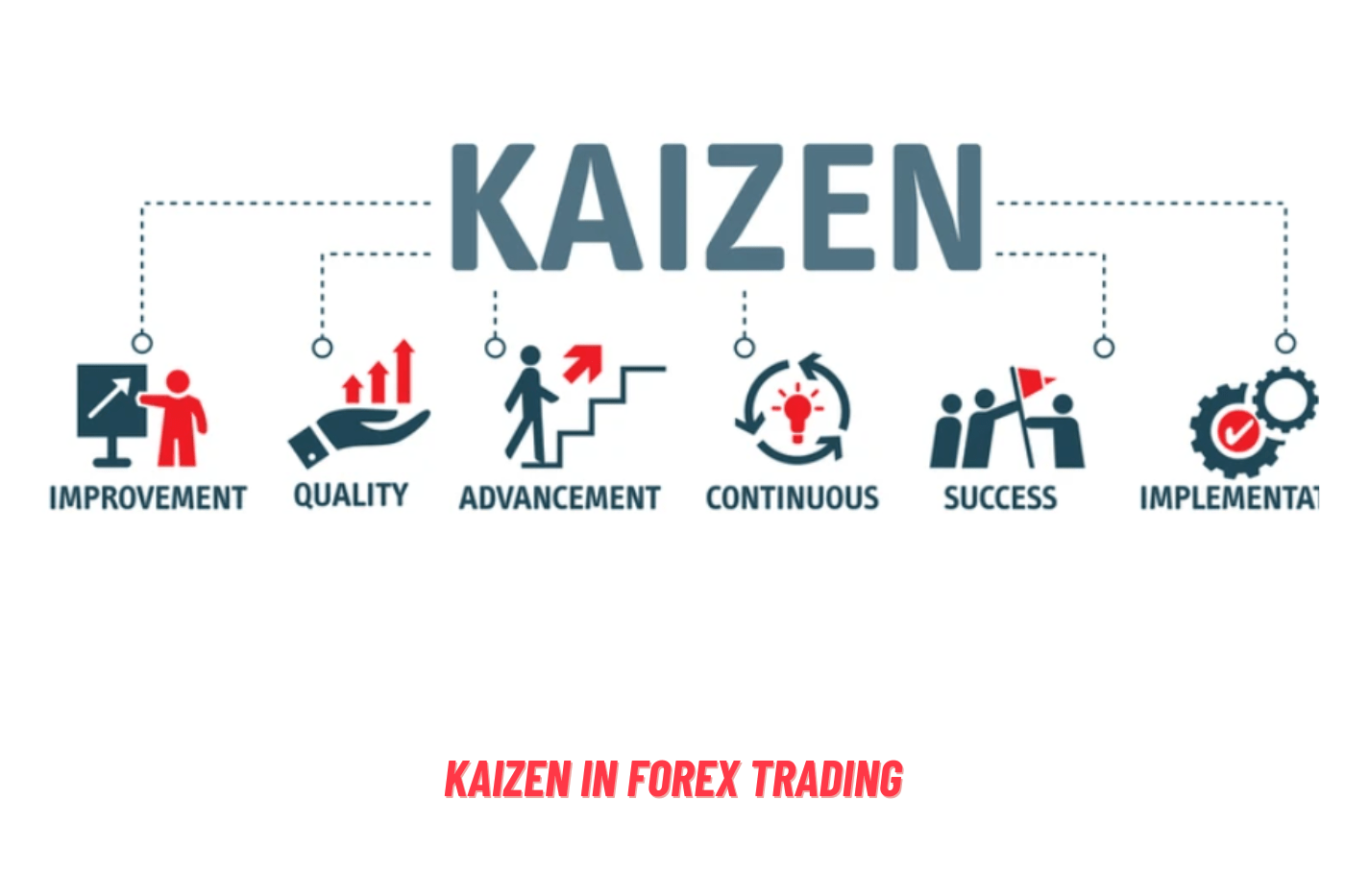Kaizen in Forex Trading:
Kaizen, a Japanese term signifying “continuous improvement,” has permeated numerous industries, from manufacturing and healthcare to software development. However, its application extends even into the realm of forex trading, offering traders a powerful philosophy to enhance their trading skills and strategies continually. In this article, we explore how the principles of Kaizen can revolutionize your approach to forex trading.
Commit to Continuous Learning:
Forex trading is a dynamic field, constantly evolving with market trends and global events. To thrive in this ever-changing environment, adopting a Kaizen mindset is invaluable. Commit to perpetual learning by staying updated with industry news, participating in seminars and workshops, and networking with fellow traders. Continuous learning is the cornerstone of improvement.
Kaizen set Realistic Goals:
Kaizen emphasizes setting attainable goals that align with long-term objectives. In forex trading, this translates to establishing realistic profit targets, efficient risk management, and tracking performance metrics. Regularly reviewing and adjusting these goals keeps you motivated and focused on enhancing your trading skills and achieving desired outcomes.
Refine Trading Strategies:
Kaizen encourages the ongoing refinement of existing processes and strategies. In forex trading, this entails adjusting your tactics based on market conditions, experimenting with new approaches, and analyzing past performance for areas of improvement. By adopting a Kaizen approach, traders can fine-tune their strategies continually to maintain a competitive edge.
Embrace a Growth Mindset:
A crucial aspect of Kaizen is cultivating a growth mindset, which involves being receptive to new ideas, feedback, and criticism. In forex trading, this means seeking input from fellow traders, analyzing losses and mistakes, and adapting your approach based on insights gained. An open mindset is key to continuous improvement.
Prioritize Feedback Loops:
Kaizen underscores the importance of feedback loops. In forex trading, this involves regularly reviewing and analyzing performance metrics like profit and loss statements, win-loss ratios, and risk management strategies. By tracking and analyzing this data, traders can pinpoint areas for improvement and make informed, data-driven decisions to enhance their strategies.
Embrace Experimentation and Testing:
Kaizen encourages experimentation and testing. In forex trading, this might involve testing new strategies, exploring different risk management techniques, or experimenting with various trading styles. Viewing trading as an ongoing experiment enables traders to continuously refine and optimize their approaches.
Value Incremental Improvements:
Kaizen emphasizes the value of incremental changes over radical overhauls. In forex trading, this means making small, measured adjustments to trading strategies and processes over time, rather than completely changing course. By making gradual changes and assessing their impact, traders can identify what works and what doesn’t, making precise adjustments accordingly.
Cultivate Self-Awareness and Reflection:
Lastly, Kaizen highlights the significance of self-awareness and reflection. In forex trading, this translates to regular introspection regarding personal biases, emotions, and mental states. Understanding one’s strengths and weaknesses empowers traders to make more informed decisions and elevate their overall performance.
In conclusion, Kaizen offers a compelling philosophy for enhancing various aspects of life, including forex trading. Embracing a Kaizen approach in forex trading emphasizes continuous learning, experimentation, incremental improvements, self-awareness, and feedback loops. By doing so, traders can consistently refine their skills and strategies, setting themselves on a path to long-term success in the dynamic and challenging world of forex trading. Embrace Kaizen, and embark on a journey of continuous improvement in your trading endeavors.


Add a Comment
You must be logged in to post a comment